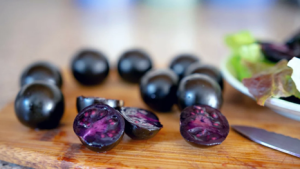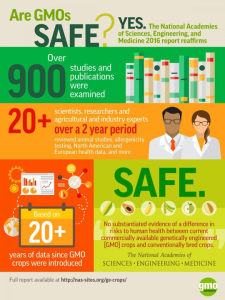Consumers spend billions of dollars at the grocery store annually on heavily marketed products that promise exciting health benefits. Of course, we want to eat healthy, protect the environment, and buy food that is safe for our children. We want the claims to be true. But, many stories being told are to monger fear and are told with malicious intent. They want to part us from our money. The evidence base for their claims often is murky or non-existent.
Most people don’t require—or expect—much evidence, as long as the story is ‘truthy’ and promises desirable benefits. “Prevents cancer! Sign me up!” I have a book on my shelf titled, “Whoever Tells the Best Story Wins.” I don’t see much emphasis in the book that the story must be accurate or true, or that it is in the best interest of the reader.
I’ve been teaching a course for several years with the same title as this blog. I have a list of 20-plus food, agriculture and nutrition topics where the marketing claims are stretched like gumby well beyond the fact base, sometimes in direct contrast to the science. There are also loads of articles and social media posts shaming and defaming our food production system and our farmers, with little regard for reality. In part one of this blog series, we’ll discuss some claims that I consider most egregious and that many of us accept as fact… without fact.
Why Does This Matter?
This absolutely matters during a time of high food prices. Paying 10-60% more for non-genetically modified organism (GMO-free) food requires a strapped consumer to sacrifice in other ways. Spending more on food means less income is available to cover health care, clothing, and housing. Convincing young mothers to consider putting at risk items of proven value (shelter) to buy things built on specious promises borders on unethical and worse. Furthermore, the claims often convince people to avoid buying foods that can actually improve health outcomes and reduce risks while benefitting the environment and saving their purchasing power. The devil is in the details. We should make decisions on each product and not paint all GMO’s as verboten just because we don’t like Roundup resistant crops. All cars are not bad because one brand/model ‘appears’ to have many naysayers complaining about it.
Let’s dig into foods containing GMOs, grown from bioengineered (or, transgenic) seed. Eighty-two percent of surveyed consumers want GMOs to be labeled on their food so they can avoid them. Everyone is certainly free to choose what to eat. But demanding misleading costly labelling and spreading mistruths about the science is not a constitutionally protected right. As scientists we should object. (If a food does not say GMO-free then assume it might contain them and choose as you wish. Plenty of foods are labelled Non-GMO. Put your money where your mouth is and leave my money and my mouth alone.)
Eighty-percent in the same survey sample also demanded labelling food that contains DNA. Let that sink in. All. Food. Has. DNA. Except maybe salt and a few other minerals. They obviously do not know what they are talking about. The customer is not always right contrary to the popular saying.
And the Science and Data Say…
The National Academies of Science, Engineering and Medicine commissioned 20 respected independent scientists to spend 2 years analyzing 20 years of data from over 900 studies. Their finding: “No substantiated difference in risks to human health between currently available genetically engineered commercial crops (GMO) and conventionally bred crops.” Billions of people have consumed trillions of meals over the last 30 years without confirmed adverse reactions. “There is no there there!” concluded Gertrude Stein after a visit to Oakland CA – the same may apply for the safety concerns about the consumption of GMO foods.
The FDA also provided data that confirms the safety of GMOs and dispels some common myths about celiac, allergies and antibiotics being linked to GMO’s.
With regard to the benefits delivered and promised by using the latest genetic technologies the list is long and growing longer
- Insect resistant crops require less application of insecticides.
- Disease resistant crops allow higher yields and lessen use of fungicides.
- Herbicide tolerant crops allow safer herbicides while reducing tillage and lessening erosion.
- Improved vision with high vitamin A rice.
- Lessen cancer risks by reducing acrylamide production in potatoes.
- Increasing levels of antioxidants by increasing lycopene in pineapples.
- Virus-resistant papaya
- Reducing food waste by reducing oxidation of cut apples to improve longevity for consumption.

Did you know that sweet potatoes are naturally transgenic by definition – they contain DNA from two organisms, in this case the extra DNA comes from an Agrobacterium. GMOs can be natural! Stand back as heads explode!
Beyond food we have 100’s of medicines and therapies developed with genetic engineering that are saving lives and improving quality of life. As genetic tools continue to expand and become sharper, the beneficial products are becoming more commonplace. We are living in exciting times because of biotechnology. We should gobble up its benefits while making sure it is safe for us, our families and the environment. We can do both! As a scientist I feel obligated to do both.
Young mothers and their kids deserve both.
Next up: There’s much more to the story on Roundup!
 6
6

